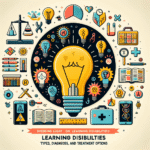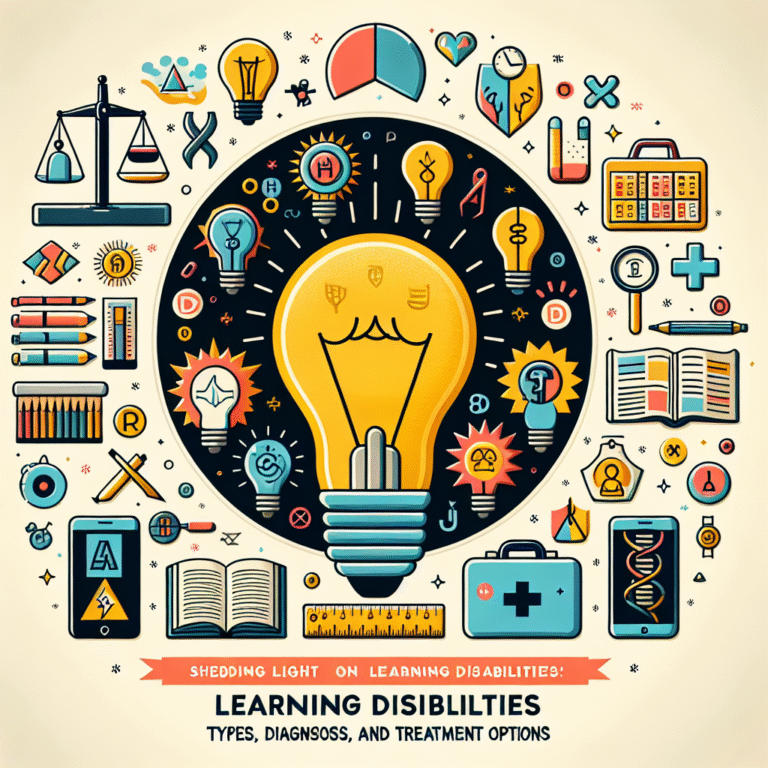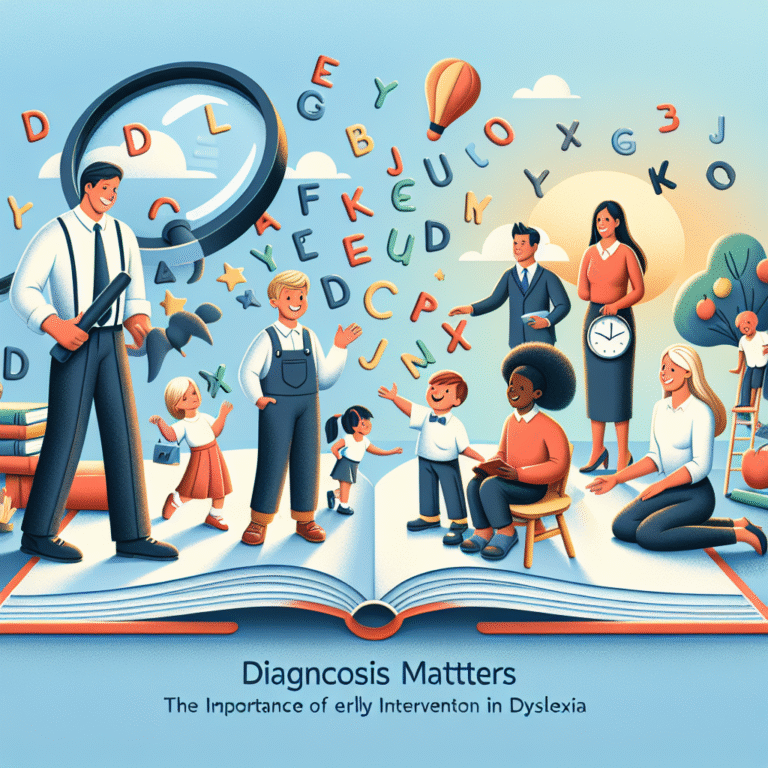
Bridging the Gap: Essential Strategies to Support Executive Function in Learners with Disabilities
Introduction
Every student has the potential to succeed; however, learners with disabilities often face unique challenges due to deficits in executive function. As educators, parents, and advocates, our mission should be to bridge the gap and provide the support these students need to thrive. Bridging the Gap: Strategies to Support Executive Function in Learners with Disabilities is not just a concept; it’s a necessity in today’s inclusive educational landscape. Executive function, which includes cognitive skills such as working memory, flexible thinking, and self-control, plays a crucial role in academic success and everyday tasks.
In this article, we will explore key strategies to enhance executive function for learners with disabilities, share real-world case studies, and provide actionable insights to help every student reach their full potential.
Understanding Executive Function and Its Importance in Learning
What is Executive Function?
Executive function is a set of mental processes that helps individuals plan, focus, remember instructions, and manage multiple tasks successfully. It comprises three main components:
- Working Memory: The ability to hold and manipulate information.
- Cognitive Flexibility: The capacity to adapt to new situations and think about things in different ways.
- Inhibitory Control: The ability to control impulses and behaviors, allowing for self-discipline.
Why is Executive Function Critical for Learners with Disabilities?
Learners with disabilities, such as ADHD, autism spectrum disorders, and specific learning disabilities, may struggle with executive function skills. This can negatively impact their academic performance, social interactions, and emotional regulation. As educators and caregivers, understanding how to support these students in developing their executive function skills is essential to fostering an inclusive and effective learning environment.
Bridging the Gap: Strategies to Support Executive Function in Learners with Disabilities
To effectively support executive function in learners with disabilities, a multifaceted approach is necessary. This strategy should involve creating an environment conducive to improving cognitive skills while providing tools and techniques tailored to each student’s unique needs.
1. Create Structured Routines
Establishing consistent routines can significantly help learners with disabilities. Predictability creates a sense of safety and reduces anxiety around transitions or unexpected changes.
Case Study: Using Morning Meetings
At a local elementary school, teachers implemented morning meetings involving students in discussing the day’s schedule. This helped students visualize their day, enhancing their working memory and cognitive flexibility.
Analysis: This simple practice allowed students to anticipate challenges, leading to smoother transitions and increased participation in class activities.
2. Incorporate Visual Supports
Visual aids can facilitate comprehension and retention of information. These aids might include charts, pictograms, or even written schedules.
Case Study: Visual Timers in Classroom Management
In a middle school, a teacher introduced visual timers for task completion. Students were provided with color-coded charts indicating time blocks for different subjects. This approach helped those struggling with time management to better regulate their work pace.
Analysis: The use of visual timers not only boosted students’ awareness of time but also increased their overall productivity by encouraging them to stay on task.
3. Teach Self-Regulation Techniques
Mindfulness and self-regulation techniques can empower learners to manage their emotions and behaviors more effectively. Techniques might include deep breathing exercises, journaling, or using apps designed to promote mindfulness.
Case Study: Mindfulness Practices in High School
In a high school, a teacher introduced daily mindfulness exercises, incorporating breathing techniques and short meditation sessions into her classroom. Students reported feeling less anxious and more focused during tests.
Analysis: By fostering an environment of calm, students were able to improve their inhibitory control and overall executive function, leading to better academic outcomes.
4. Foster Collaborative Learning
Collaborative learning environments encourage students to work together, enhancing social skills and teamwork, which are essential aspects of executive function.
Case Study: Group Projects in a Special Education Setting
A special education class engaged in group projects that required shared responsibilities and collaborative planning. Through structured group dynamics, students learned to negotiate tasks and support each other’s learning.
Analysis: This collaborative approach not only improved academic skills but also strengthened social-emotional skills, proving to be invaluable for students with disabilities.
5. Implement Technology Tools
Technology can serve as an effective tool to support executive function. Apps and software that aid in organization, time management, and study skills can provide students with the necessary scaffolding.
Case Study: Task Management Apps in a Learning Center
A learning center for students with disabilities utilized task management apps that provided reminders and visuals for homework and assignments. The intervention saw significant improvement in students’ ability to submit work on time.
Analysis: The integration of technology allowed students to take ownership of their learning and develop essential organizational skills.
6. Provide Tailored Feedback and Support
Regular feedback informs learners of their progress and helps identify areas for improvement. Tailored interventions can create a more personalized learning experience.
Case Study: Individualized Goal Setting with Special Needs Students
Teachers developed personalized goal-setting sessions for students with disabilities. By creating measurable and attainable goals, students felt a greater sense of achievement.
Analysis: Personalized feedback and goal setting helped students build confidence and motivation, bridging the gap in their executive function skills.
7. Encourage Active Participation in Learning
Engaging students actively in their learning journey fosters a sense of ownership and responsibility, enhancing cognitive flexibility and working memory.
Case Study: Interactive Learning Methods in an Inclusive Classroom
In an inclusive classroom, teachers employed interactive methods, such as gamification and role-playing, to encourage active participation. The approach led to higher engagement levels among students with disabilities.
Analysis: This active involvement not only improved learning outcomes but also strengthened executive function by requiring students to think critically and adapt to varying scenarios.
Bridging the Gap: Creating an Inclusive Environment
Creating an inclusive classroom requires collaboration among educators, parents, and specialists. It’s essential to focus on developing the whole child, recognizing that academic success is intertwined with social and emotional well-being.
Building Strong Home-School Partnerships
Establishing strong communication channels between home and school can significantly benefit learners with disabilities. Regular check-ins, workshops, and resource sharing can empower families to support their children effectively.
Case Study: Family Workshops on Executive Function Skills
One school organized workshops aimed at teaching families about executive function and how they could support their children at home. The initiative led to increased parent involvement and a noticeable improvement in students’ coping strategies.
Analysis: By fostering partnerships with families, schools can create a more robust support system for learners with disabilities.
Conclusion
Bridging the Gap: Strategies to Support Executive Function in Learners with Disabilities is a journey that requires patience, understanding, and creativity. The strategies outlined above are not a comprehensive solution but serve as a foundational framework for supporting learners with disabilities in developing essential executive function skills.
Every student deserves the opportunity to thrive academically and socially. By implementing structured routines, visual supports, self-regulation techniques, technology, and collaborative learning, educators can significantly impact their students’ lives.
As we move forward, let’s embrace innovative strategies, celebrate progress, and foster an inclusive environment where every learner can shine.
FAQs Section
1. What are executive function skills and why are they important?
Executive function skills involve cognitive processes that help individuals manage tasks, make decisions, and regulate behavior. They are crucial for academic success, self-control, and social interactions.
2. How can I identify executive function challenges in students with disabilities?
Look for signs such as difficulty organizing tasks, managing time, following through on assignments, and emotional regulation. Observations and feedback from educators can provide valuable insights.
3. Are there specific tools to support executive function skills?
Yes, tools such as visual timers, task management apps, and organizational charts can significantly assist students in enhancing their executive function skills.
4. Can collaboration with peers improve executive function skills?
Absolutely! Collaborative learning fosters social interaction and communication, which can help students improve their executive function through shared tasks and problem-solving.
5. What role do families play in supporting executive function in learners with disabilities?
Families provide vital support and reinforcement at home, encouraging the application of skills learned in school, and advocating for their child’s educational needs through consistent communication with educators.
By employing these strategies and fostering a collaborative community, we can succeed in bridging the gap and ensuring that learners with disabilities achieve their fullest potential.









